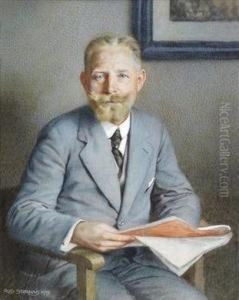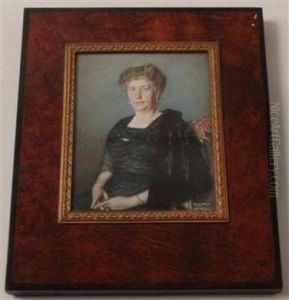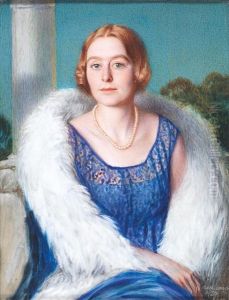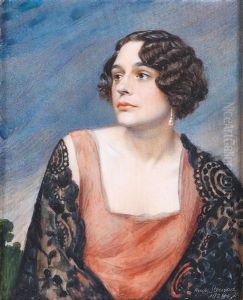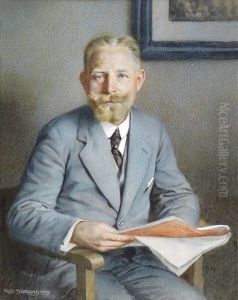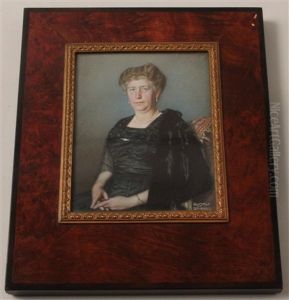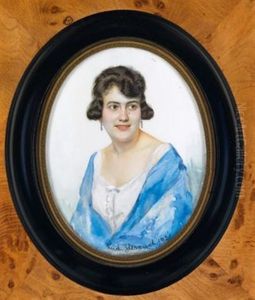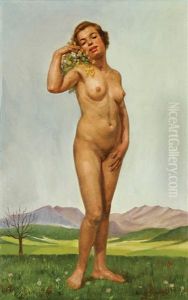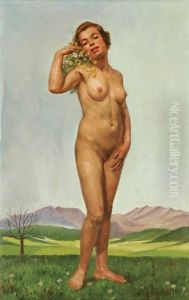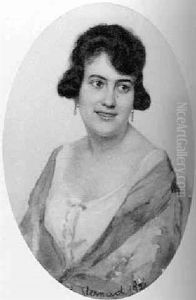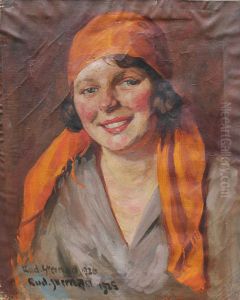Rudolf Sternad Paintings
Rudolf Sternad was an Austrian artist and stage designer, born in 1901. His work, spanning the early to mid-20th century, was deeply influenced by the artistic movements of his time, particularly by Expressionism and the New Objectivity. Sternad's career was notably diverse; he was as adept in painting and graphic design as he was in creating innovative stage sets for theater productions. His contributions to the visual arts and stage design during the interwar period in Austria and Germany were significant, reflecting the tumultuous social and political changes of the era.
Sternad's education in the arts took place in Vienna, a hub for artistic innovation and intellectual discourse in the early 20th century. It was here that he was exposed to the works of contemporaneous artists and the avant-garde movements that would influence his stylistic development. Despite the vibrant artistic community in Vienna, Sternad's work did not remain confined to the Austrian capital. His career took him across Europe, where he collaborated with various theaters and engaged with a network of artists, further enriching his artistic style and approach.
Throughout the 1920s and 1930s, Sternad's reputation as a stage designer grew. His stage sets were known for their inventive use of space and light, often incorporating elements of modernist architecture and design. He had a keen ability to translate the emotional and psychological depth of a play into visual form, enhancing the theatrical experience for the audience. However, Sternad's career was tragically cut short. He died in 1944, amidst the upheavals of World War II, leaving behind a body of work that, while not extensive, is remembered for its originality and the unique insight it provides into the interwar period.
Despite his premature death, Rudolf Sternad's contributions to art and stage design have not been forgotten. His work continues to be studied and appreciated for its innovative approach and its reflection of the complex socio-political context of early 20th-century Europe. Sternad's legacy is that of an artist who bridged the worlds of visual art and theater, bringing a distinctive vision to both.
